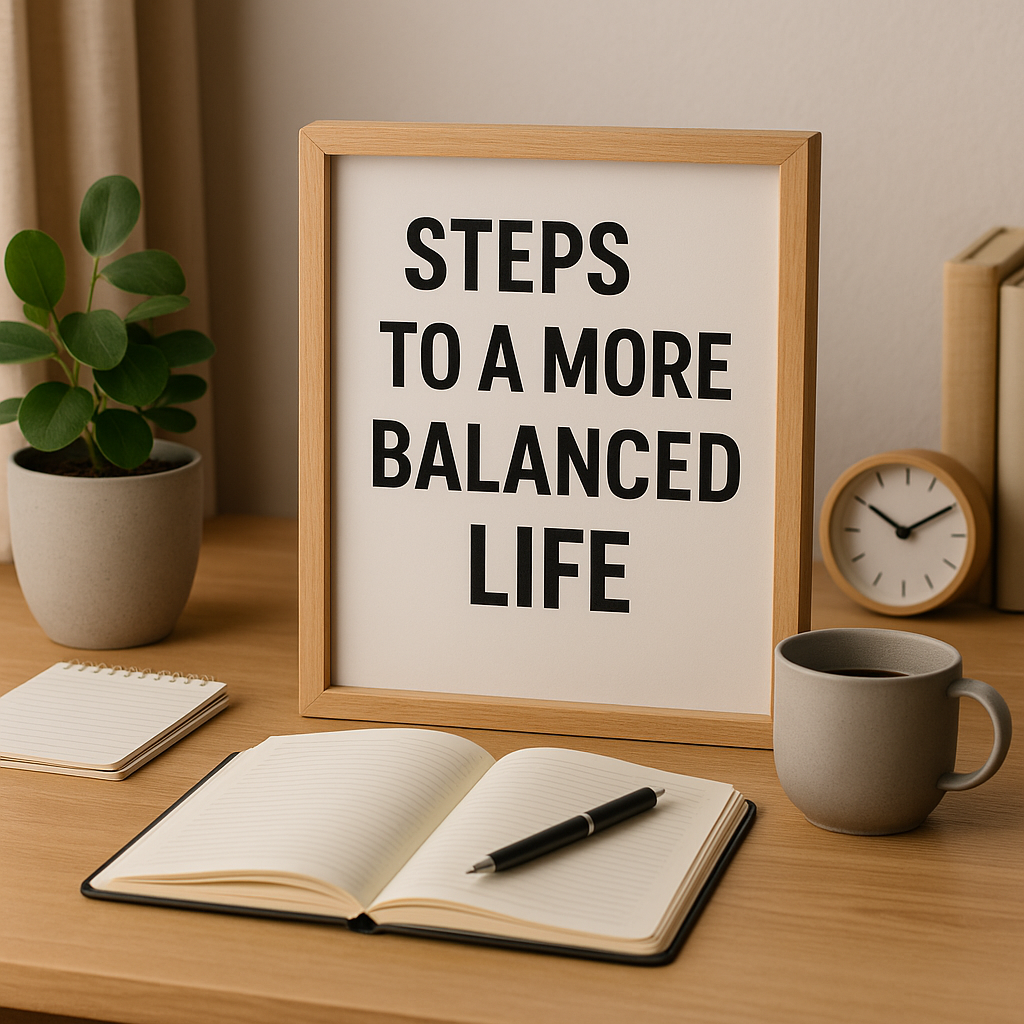In a world full of constant demands and fast-paced living, finding balance can feel like an impossible task. However, achieving a more balanced life is not about perfection—it’s about making intentional choices every day. In this article, you’ll learn practical steps to create more harmony between your personal, professional, and emotional worlds.
1. Define What Balance Means to You
Balance looks different for everyone. For some, it might mean having more time with family; for others, it could be focusing on career development without sacrificing personal health. Take time to reflect and define what a balanced life looks like for you personally.
2. Set Clear Priorities
Identify your top priorities in life—whether it’s family, career, health, or personal growth. Knowing your priorities helps you allocate time and energy where it truly matters, rather than spreading yourself too thin across unimportant activities.
3. Learn to Say No
One of the most powerful skills in achieving balance is the ability to say no. Politely declining activities, invitations, or responsibilities that don’t align with your goals frees up time and energy for what truly matters.
4. Create a Realistic Schedule
Design a daily or weekly schedule that respects both your work and personal needs. Include time for exercise, meals, rest, hobbies, and relationships. A well-structured schedule helps prevent burnout and ensures that self-care isn’t an afterthought.
5. Practice Mindfulness
Mindfulness means being fully present in each moment. Instead of multitasking and rushing through activities, slow down and focus on what you’re doing. Whether it’s eating, working, or spending time with loved ones, mindfulness enhances your experience and reduces stress.
6. Take Care of Your Physical Health
Physical well-being is the foundation of a balanced life. Prioritize good sleep, nutritious food, regular exercise, and hydration. When your body feels good, it’s much easier to manage life’s challenges and maintain emotional stability.
7. Manage Your Technology Use
Technology, while useful, can easily disrupt balance if left unchecked. Set boundaries around work emails, social media, and screen time. Designate tech-free zones or times during your day to reconnect with yourself and those around you.
8. Schedule Downtime
Rest and relaxation are essential—not optional. Regular downtime helps you recharge mentally and physically. Whether it’s reading, meditating, taking a walk, or doing absolutely nothing, make downtime a non-negotiable part of your routine.
9. Check in with Yourself Regularly
Life changes, and so do your needs. Set aside time each week or month to evaluate how balanced you feel. Are you honoring your priorities? Are you feeling stretched too thin? Adjust your schedule and habits as needed.
10. Celebrate Progress, Not Perfection
Striving for a perfectly balanced life can cause more stress than it solves. Instead, focus on progress. Celebrate the small improvements you make and be gentle with yourself when things don’t go as planned. Balance is a continuous journey, not a final destination.
Finding Your Personal Harmony
Achieving a balanced life is about making conscious, daily choices that reflect your values and support your well-being. With patience, intention, and self-awareness, you can create a life that feels more fulfilling, peaceful, and authentically yours.

